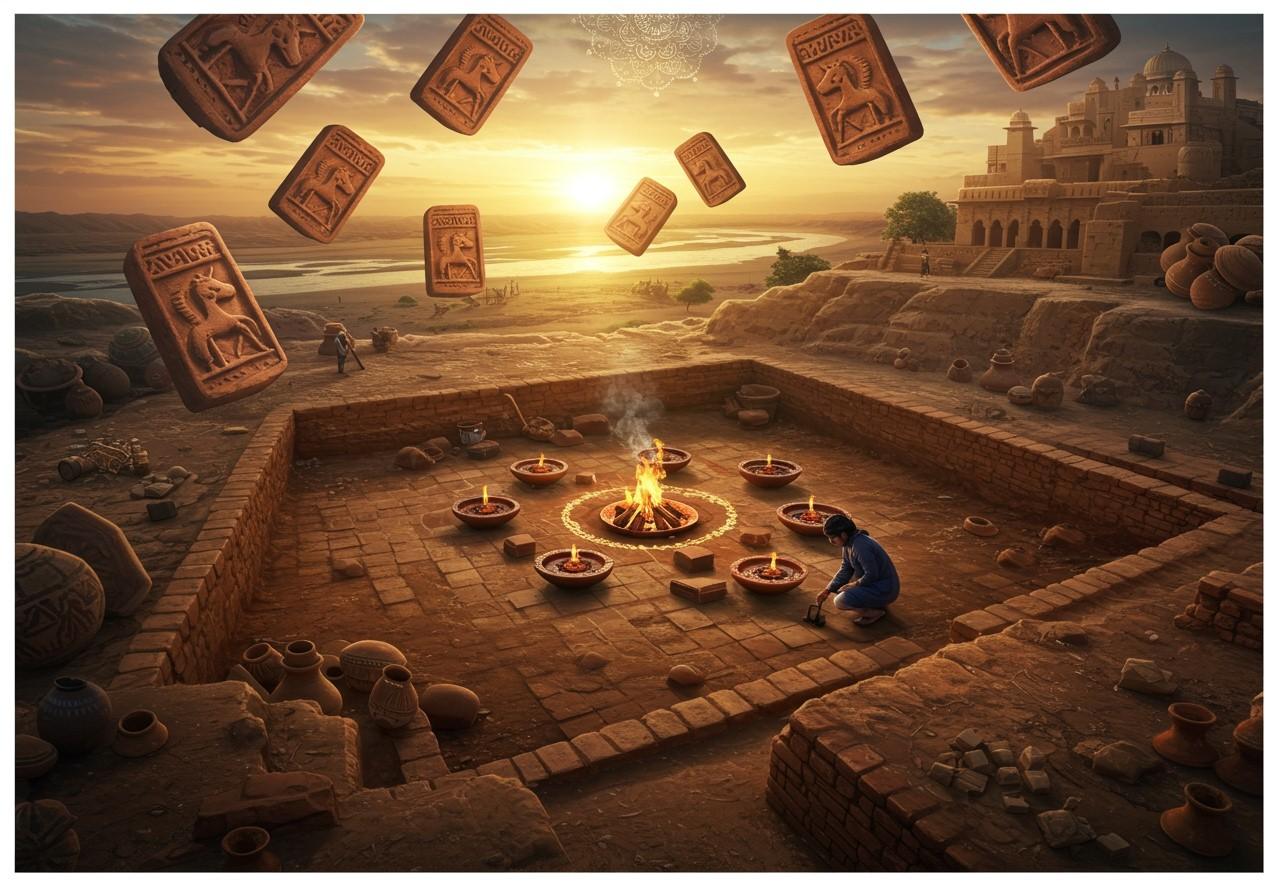
Kalibangan, a captivating ancient city, provides a unique window into the rich history of the Indus Valley Civilization (2500-1700 BCE). Explore its significance, uncover its secrets, and delve into its archaeological treasures, cultural heritage, and its place within the broader Indus Valley context. This civilization, known for its advanced urban planning, encompassed over 1,000 cities and settlements, including Harappa and Mohenjo-daro (present-day Pakistan), and featured sophisticated wastewater systems and public infrastructure. Unlike these cities, however, the civilization lacked evidence of monumental structures like palaces or temples.
The Historical Significance of Kalibangan
Kalibangan holds a prominent position in the Indus Valley Civilization. A major urban center during the Bronze Age, its discovery in the early 20th century by Italian Indologist Luigi Pio Tessitori, followed by excavations led by the Archaeological Survey of India, revealed its importance.
Kalibangan’s unique features include:
- Well-planned layout: Exhibiting a sophisticated understanding of urban design, the city’s layout reflects a structured and organized approach to city planning, characteristic of the Indus Valley Civilization.
- Advanced urban infrastructure: The city boasted advanced infrastructure, including drainage systems, which highlights the civilization’s engineering prowess.
- Evidence of early agricultural practices: Discoveries at Kalibangan provide evidence of sophisticated agricultural practices, giving insights into the civilization’s sustenance methods.
- Significance of plowed fields: The presence of plowed fields indicates a structured approach to agriculture and land management, crucial for a thriving urban center.
Kalibangan played a vital role in the Indus Valley’s trade and commerce network.
Location and Layout of Kalibangan
Located in Rajasthan’s Hanumangarh district, along the now-dried Ghaggar River, Kalibangan’s structure reveals meticulous planning:
- A citadel: The presence of a citadel suggests a central administrative and potentially religious hub within the city.
- A lower town, separated by a wall: The division between the citadel and the lower town indicates social stratification and specialized areas within the city.
- Streets in a grid pattern: The grid pattern of streets reflects advanced urban planning and organization, facilitating movement and access.
- Standardized brick sizes: The use of standardized bricks points to a centralized system of production and construction, showcasing the civilization’s organizational capabilities.
Public wells, granaries, and residential areas showcase advanced urban planning. Defensive walls and fortifications around the citadel emphasized security.
Archaeological Discoveries and Artifacts
Kalibangan’s archaeological findings offer glimpses into the daily lives of its inhabitants. Key discoveries include:
- Pottery and tools: The variety of pottery and tools discovered at Kalibangan shed light on the daily activities and craftsmanship of its inhabitants.
- Unique fire altars: The unique fire altars suggest ritualistic practices and provide insights into the religious beliefs of the people.
- Evidence of early metallurgy: The presence of copper and bronze objects demonstrates early metallurgical skills and technological advancements.
- Terracotta figurines, beads, and seals: These artifacts reflect the artistic expression and cultural practices of the civilization, offering clues about their beliefs and social structures.
- Plowed field: The discovery of a plowed field provides evidence of early agriculture and sophisticated land management techniques.
Cultural and Religious Practices
Kalibangan’s civilization exhibited rich cultural and religious practices, as evidenced by:
- Ritualistic practices with fire altars: The presence of fire altars suggests the importance of fire in rituals and ceremonies, offering clues about their religious beliefs.
- Possible temples: While not as prominent as in later civilizations, possible temple structures indicate the presence of organized religious practices.
- Terracotta figurines and seals depicting deities: These artifacts provide insights into the deities worshipped and the symbolism prevalent in their religious beliefs.
- Public wells and water reservoirs for religious practices: The use of water in religious practices is evident in the presence of public wells and reservoirs, highlighting the importance of water in their rituals and beliefs.
Impact and Legacy of Kalibangan
Kalibangan has significantly advanced our understanding of early urbanization and agriculture in the Indian subcontinent. Comparisons with other Indus Valley cities like Harappa and Mohenjo-daro reveal both similarities and unique aspects of Kalibangan’s urban planning, which influenced later civilizations in the region.
Preserving Kalibangan’s Legacy
Preserving and studying Kalibangan is crucial for understanding ancient India’s history. Its unique features, artifacts, and evidence of early practices make it invaluable for researchers and historians. As we uncover more, we gain deeper insights into the advanced nature of the Indus Valley Civilization.
Connect with Ancient Traditions at Poojn.in
Poojn.in, India’s leading cultural goods and services store, offers a wide selection of products to connect you with the spiritual heritage of ancient sites like Kalibangan. Explore our diverse collection:
- Bel malas: Connect with ancient traditions through these sacred beads, reminiscent of those potentially used in Indus Valley rituals.
- Tulsi malas: Embrace the spiritual significance of Tulsi with these handcrafted malas, ideal for prayer and meditation.
- Shiva lingams: Honor Lord Shiva with these beautifully crafted lingams, perfect for personal altars and spiritual practices.
- Adiyogi statues: Bring the powerful presence of Adiyogi into your home with these intricately designed statues.
Poojn.in provides authentic puja items and ritual materials for a deeper spiritual experience. Visit us today and explore our extensive collection!


